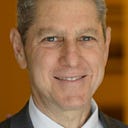Are you a person, or are you capacity for everything?
by Vic Shayne
author
The Self is a Belief: the idea that causes suffering
A paradigm is a philosophical or theoretical framework; it’s how we see the world. The world. Where is this world and how is it formed?
What is this world that we look onto with so many varied feelings, ideas, and opinions? It is a world of phenomena, action, birth, death, suffering, creatures, experiences, pleasure, pain, fear, hate, and love. It is the totality of all that is consciousness. And we all see this world differently, because it is perceived as “out there” in some field that is away from us. But the direction is always “out there,” even if it is in our minds.
We have become accustomed — trained — to focus the attention out there and then use our beliefs, opinions, judgments, perceptions, and tastes to have a feeling about this external thing that we call, collectively, reality. But there is no reality — not a single reality, that is. Even when the eyes are closed and we are staring into the third eye, we are still looking out. Consider this deeply.
Turning the attention back to the one who attends
If we were to turn the focus from “out there” back to the perceiver, seer, or observer, then what might happen? Have you ever done this? When you practice this for an extended period of time — days, months, years — then your paradigm changes. This is because the “inner” world is not at all like the “outer” one.
You may wonder why I put quotes around “inner” and “outer.” It is because neither of these actually exist as states or locales. Rather, they are ideas much like the concepts of high or low.
In, out, up, down
When we are in space, high above the earth, we find that there is no real up or down, because such terms are only relative to living on the planet. Similarly, consciousness that is “out there” is the same consciousness that is perceived to be “inside” the mind. This can only be realized through your own meditation into this truth. If you were to go deeper and deeper inward into the sense of you as a person, or anything that you perceive as an object, you would find that everything turns into tissues, then cells, then molecules, then atoms, then subatomic particles, and then vast nothingness — the same as if you were to go out, out, out into the depths of space where the eventuality is a vast and endless nothingness. However, paradoxically, nothingness contains everything. But what is this nothingness comprised of? What is its quality or essence?
Looking outward we find a world, a reality, full of everything — plants, animals, air, water, fire, earth, wind, nature, objects, action, and the full spectrum of feelings and thoughts. When we focus upon all or any of these things and find them important, repulsive, or attractive, then we forget the world that is “inward” in the heart of the seer.
By turning the attention inward at the one who sees, not as a being, but as a verb, something remarkable occurs, and that is a complete loss of identification with the personal self.
We begin with ‘I am’
Awareness makes the world of reality known to you. We begin with the words, “I am” in order to make the first claim — “I am aware that I am aware.” Where is this awareness, and the one who is aware, coming from? To find this is to find something so remarkable that the mind cannot know it. It is felt or realized, and not cognized or experienced. This is because knowledge and experience are impermanent, while the source of awareness is permanent.
The inner world that remains as the great Silent Stillness prior to all movement, experience, phenomena, and expressions is the source that is rarely realized. But if you do realize it, then you could say that it is total and unbounded capacity.
Being the capacity for all
Capacity is the potential or suitability for holding, storing, or accommodating. It is this inward sense, as the source, that holds all that is called “outward.” And this sense is not a thing; it is pure and unalloyed capacity from which all phenomena emerges simply through attention. This idea of capacity has been explored in great depth by Douglas Harding and Richard Lang, as well as their students over the many decades. It has also been explored by all of the so-called enlightened sages from Buddha to Ramana Maharshi. This is because there is only one capacity, and it is the Silent Stillness that has room for all images and phenomena that are perceived to be going on “out there.”
Everything that is perceived to be “out there” is simply an image arising out of the capacity “in here.” When we enquire into whether we are individual people or this great capacity at the source, what is the answer? The realization of the truth that can answer this question is up to anyone who has enough interest and persistence to answer for herself.
Sit where it is quiet for a moment and simply look out onto your environment. It does not matter whether you are in your living room, a library, a parking lot, or in nature. Just look “out there.” Next, reflect on the source of this looking — not the one who looks, but the looking itself. Point to where your face should be located and ask yourself what your finger is pointing at. Is it a being or is it the capacity for everything that is “out there”?
